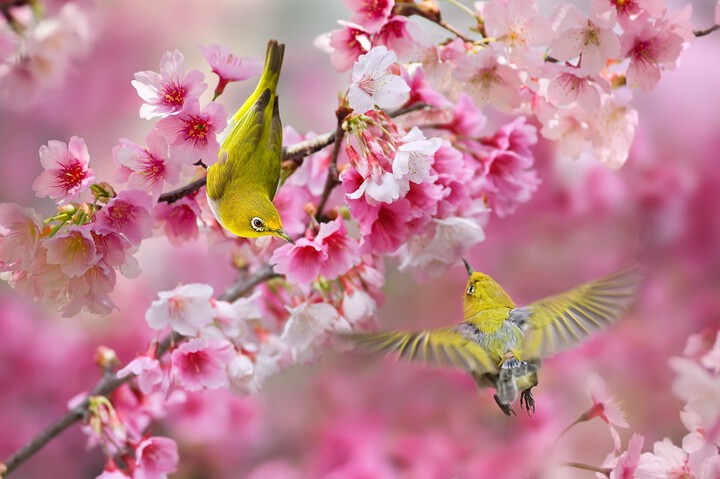Here are the flowers to have hummingbirds, blue jays, and orioles flocking to your garden.

There are many benefits to hosting the birds in your backyard. They provide natural pest and weed control by eating insects and seeds in your yard and off your plants and offer hours of birdwatching. Birds like hummingbirds and orioles also help to pollinate flowers. By creating a habitat that is friendly to birds, you are helping the environment. Birds have a chance to thrive in your area because of your encouragement. And one of the ways to bring more birds to your yard involves the use of color. "Different birds are attracted to different colors," explains Anne Marie Johnson, Project Feederwatch assistant at the Cornell Lab for Ornithology. "For the most part, colors associated with foods that birds eat will attract birds."
Colors hold meaning for many birds. Lynn Holtzman, a wildlife management and ornithology instructor at Hocking College, says that birds are one of the few animals, like humans, that can see in color. Birds rely on color signals to choose or attract their mates, and color can also be used as a way to protect them from predators. "The ruffed grouse has a 'dead-leaf' color pattern in order to blend into the forest floor," says Holtzman. "The female ring-necked pheasant has a 'dead-grass' color pattern to blend with its grassland nesting habitat." Certain colors, like red for the hummingbird, signal food to the bird.
Related: The Best Bird Feeders for Your Backyard
Red
If you are looking to bring hummingbirds to your yard, then having lots of red flowers will make your yard very attractive. "The ruby-throated hummingbird is attracted to red-colored flowers that provide nectar," says Holtzman. Plant an assortment of red flowers, like the wild columbine or royal catchfly, to appeal to hummingbirds in your area. And some flowers evolved specifically to attract hummingbirds, explains Bob Mulvihill, an ornithologist at The National Aviary. "Red wavelengths of lights are not highly visible to insect pollinators," he says. "But they are vivid to birds."
Blue
"Bluebirds and Blue Jays tend to be attracted to blue," says Johnson. This is partly because birds seem to be attracted to their own color. So, if you want to attract birds that come in a variety of blue shades, you can incorporate more blue into your backyard with flowers and bird feeders.
Orange and Yellow
"Baltimore Orioles readily find feeders and fruits that match their own bright orange color," says Mulvihill. "And American Goldfinches seem to favor bright yellow feeders that not only match their own coloration but also the color of sunflowers whose seeds they relish." Include a variety of orange and yellow flowers in your landscape to appeal to these two birds.
Neutral and Earthy Tones
If you want to attract birds in shades of gray, black, brown, and green, then providing lots of camouflage cover will make your yard an attractive hang-out. Birds will want to have a safe place from predators, and you can design your landscape to offer a haven. Don't be surprised if you hear more bird songs in your yard after incorporating all of these colors into your yard.
The One Color to Avoid
While no color will specifically discourage birds from your yard, having too much white could keep a few birds away. "This probably stems from the stark contrast between white and the surrounding environment," explains Mulvihill. "When alarmed or showing aggression, birds will sometimes flash white wings and tail patches, so white can be startling to birds." But white alone is often not enough to repel birds.
According to Johnson, any color that is combined with movement can scare birds away. Reflective and metallic surfaces also tend to repel birds. "Large amounts of white, like a white house, might be less appealing to non-white birds (most birds) because their own coloring will contrast starkly, making them more visible to predators," she says. "But if there are natural plantings in the yard that birds can hide in, then a white house won't be a deterrent."